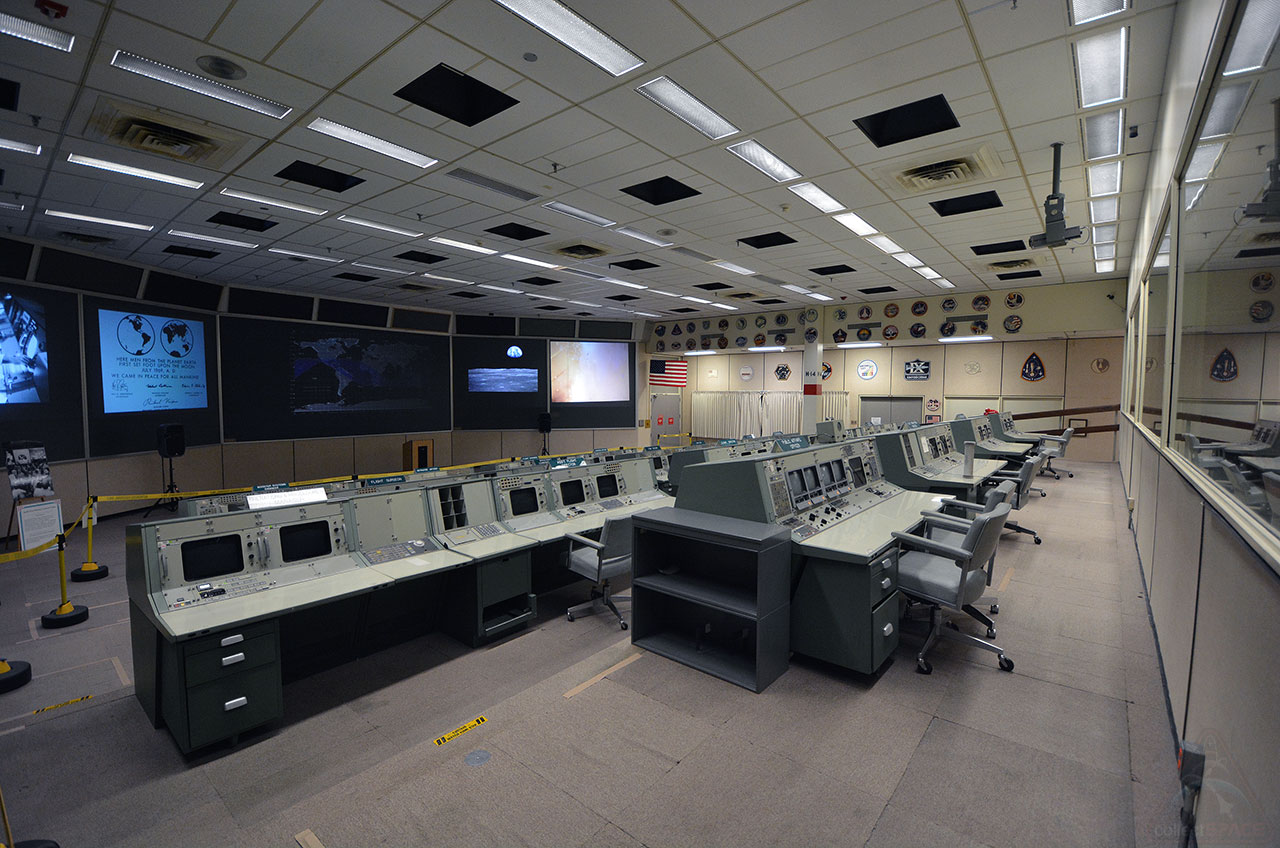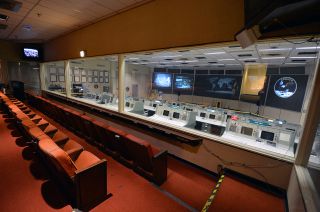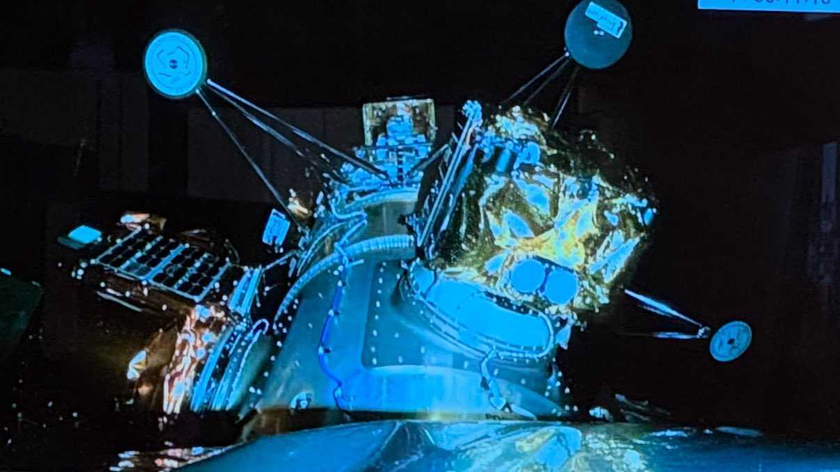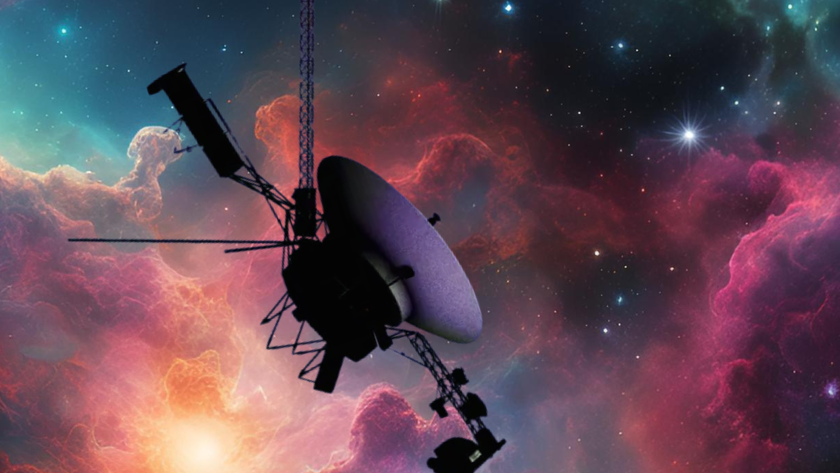On a Mission: Restoration to Return NASA Mission Control Room to Apollo Glory

HOUSTON — Over the past 50 years, NASA's Mission Control in Houston has undergone a number of upgrades, improving the technologies that support humans in space. The facility's next renovation though, is notably focused on achieving the opposite — rolling back decades of changes to return its most famous room to how it looked when the first astronauts landed on the moon.
The Mission Operations Control Room, located on the third floor of the Christopher C. Kraft, Jr. Mission Control Center at NASA's Johnson Space Center in Texas, is about to get a $5 million restoration to mark the 50th anniversary of the Apollo 11 moon landing and serve as an inspiration for the generations of visitors who come to see it on public tours.
"I believe this is going to be the tribute that the men, and a few women, are provided for the years of dedication," said Eugene Kranz, the famed flight director who led the room when Neil Armstrong and Buzz Aldrin landed at Tranquility Base on July 20, 1969 and when the Apollo 13 astronauts radioed, "Houston, we've had a problem," a year later. "It's a real pleasure to address the era that we worked in, with technologies that we worked with in the 1950s and 60s." [Mission Control Houston - A Flight Director's Walkthrough (Video)]
Designated by the National Park Service as a landmark in 1985, the Apollo-era Mission Operations Control Room-2 (MOCR-2, also known as Flight Control Room-2, or FCR-2) has been left in more or less the condition it was when it controlled its last flight, space shuttle Discovery's STS-53 mission in December 1992. The restoration will strip away the later-era modifications to present the room in the state for which it is best known.
"The room was actively in use for 30 years. It was used for the shuttle program, so it has been adapted," said William Harris, president and CEO of Space Center Houston. "The room is very barebones at this point. It is kind of shell of what it had been during that era."
Authorized personnel only
"As the official visitor center for Johnson Space Center, we are authorized to take guests behind the scenes. Our most popular stop is the control room," said Harris. "Guests love going into the viewing area and hearing about the missions that took place. It is an important part of American history and space history."
For years, the public has been able see the room through two tours operated by Space Center Houston. They could board a tram to see the room from behind the glass of the viewing gallery where dignitaries and the astronauts' family members were seated during the missions, or they could take a premium, more limited tour that provided access to the floor of the MOCR and even the opportunity to sit down at the consoles.
Get the Space.com Newsletter
Breaking space news, the latest updates on rocket launches, skywatching events and more!
Further, as an active facility — another room in the building is the control center for the International Space Station and is continuously staffed by flight controllers 24 hours a day, 7 days a week — anyone with authorized access to the Mission Control Center could enter the Apollo MOCR, too. Now, with the restoration pending, that has changed.
"We've implemented security protocols, so now the access is very limited to the room," Harris said in an interview with collectSPACE.com. "We have stanchioned off the consoles, so [public] tours and other VIP tours can enter the room, but they are restricted as to where they can go. Visitors can no longer sit in the seats at the consoles."

Authentic space
On April 19, project leaders from Space Center Houston, NASA and the Texas Historical Commission will meet with the National Park Service to review the proposed plans for the control room's restoration.
"That review will look at everything we might do to restore the room," said Harris. "If it goes well — and we anticipate it will, because there has been a lot of work done already on identifying the components that need to be restored — work will begin as soon as possible after that date."
Using documentation, footage and photos that were taken during the missions, as well as the direct advice of Apollo-era controllers (including Kranz), a detailed plan has been put forth that includes everything from matching the carpet that was in place during the Apollo missions and repairing the walnut railing that lined the tiered rows of workstations, to restoring the consoles to their 1969 configuration.
"The goal is to illuminate the consoles and add artifacts to the space from the era, so that visitors get a depiction of what it was like [and] what was going on in that space at the time of the landing on the moon," described Harris.
Some of the proposed work will be relatively easy, such as sourcing period ash trays, coffee mugs, pencils and tape dispensers to dress the consoles as they were used nearly 50 years ago. That same period of time though, presents challenges, too, particularly with regards to repowering the consoles.
"Some of that technology no longer exists," Harris stated. "You cannot get all the tubes and other components. The object is to restore it to the best of our ability in a way that it will last for the decades to come. In some areas, we are going to have use to other technology to represent it as it was at the time. It will all be represented as accurately as is possible."
The intention is to provide visitors with a view into the past, letting the room reality of the room speak for itself.
"We do want to stay away from is making it too theatrical," said Harris. "It is really about the authentic space. We want to restore it without creating a lot of drama, because that can be a distraction." [Space Center Houston: A Tour in Photos]

The Webster Challenge
"There has been incredible commitment from the Johnson Space Center, from the Apollo alumni and from us to get this done," stated Harris. "Our goal is have the restoration done in time for the anniversary of Apollo 11 in July 2019, so we are working really hard to do that."
"We would like to get it done a little sooner than that, if that is possible. There's been a goal to potentially have it done by the anniversary of Apollo 8 [the first to orbit the moon] in December 2018. But there are so many wild cards," he said.
One of those "cards" might have been how to pay for the restoration, were it not for a substantial gift — $3.5 million — from a longtime partner of Space Center Houston.
"We had a long-term relationship with the City of Webster," explained Harris. "They have been a sponsor for some 15 years and they have really enjoyed our relationship. Many of our guests stay in Webster hotels and they frequent the businesses in the city of Webster. So they really value the relationship with Space Center Houston and our visitors."
The donation, which is the largest philanthropic gift in the history of Space Center Houston, stems from taxes the city collects on hotel stays.
"The Hotel Occupancy Tax is restricted by state law how you can spend it," said Mike Rodgers, finance director for the city of Webster, who was the first to propose the gift to the city's council. "One of the things you can spend it on is historical restoration. And because we had this relationship with Space Center Houston, it was one of those light bulb moments."
"The gift itself is courtesy of the thousands of people who stay in our hotels when they visit Space Center Houston. We are the primary place where everyone stays when they come here and it is because of that that we can do this," said Rodgers.
Of the $3.5 million pledged, $3.1 million will underwrite the core restoration of the Mission Operations Control Room and its viewing gallery. Space Center Houston is seeking to raise another $1.5 million to cover the future upkeep of the control room and other related improvements, such as upgrading the elevator that even back in the Apollo years, wasn't always reliable ("The men who worked in the Apollo control room told us that during missions they never took the elevator because it would get stuck. It was not a high budgetary priority when it was put in," said Harris.") [Apollo 11's Scariest Moments: Perils of the 1st Manned Moon Landing]
To that end, $400,000 of the city's donation has been set aside for the Webster Challenge, a 1 to 1 matching pledge for an upcoming crowdfunding campaign that will invite the public to help with the restoration.
"It is very exciting for us," said Wayne Sabo, Webster's city manager. "All of us, of our age, remember exactly where we were when they stepped on the moon. I have been in Mission Control and just the feeling of it, standing there, is amazing."
"I think they will come up with the real wonder of what we did, the kinds of tools we had, and individual commitment dedicated needed to do a job that was never done before," said Kranz of the room's restoration. "When [future young visitors] leave Mission Control, I think they [will] remember we accomplished our mission and they must step forward for theirs."
For more details or to donate to the restoration, see Space Center Houston's "On A Mission" website at: http://www.spacecenter.org/giving/restore-mission-control
See more photos of NASA's Apollo-era Mission Operations Control Room at collectSPACE.
Follow collectSPACE.com on Facebook and on Twitter at @collectSPACE. Copyright 2017 collectSPACE.com. All rights reserved.
Join our Space Forums to keep talking space on the latest missions, night sky and more! And if you have a news tip, correction or comment, let us know at: community@space.com.

Robert Pearlman is a space historian, journalist and the founder and editor of collectSPACE.com, a daily news publication and community devoted to space history with a particular focus on how and where space exploration intersects with pop culture. Pearlman is also a contributing writer for Space.com and co-author of "Space Stations: The Art, Science, and Reality of Working in Space” published by Smithsonian Books in 2018.In 2009, he was inducted into the U.S. Space Camp Hall of Fame in Huntsville, Alabama. In 2021, he was honored by the American Astronautical Society with the Ordway Award for Sustained Excellence in Spaceflight History. In 2023, the National Space Club Florida Committee recognized Pearlman with the Kolcum News and Communications Award for excellence in telling the space story along the Space Coast and throughout the world.










